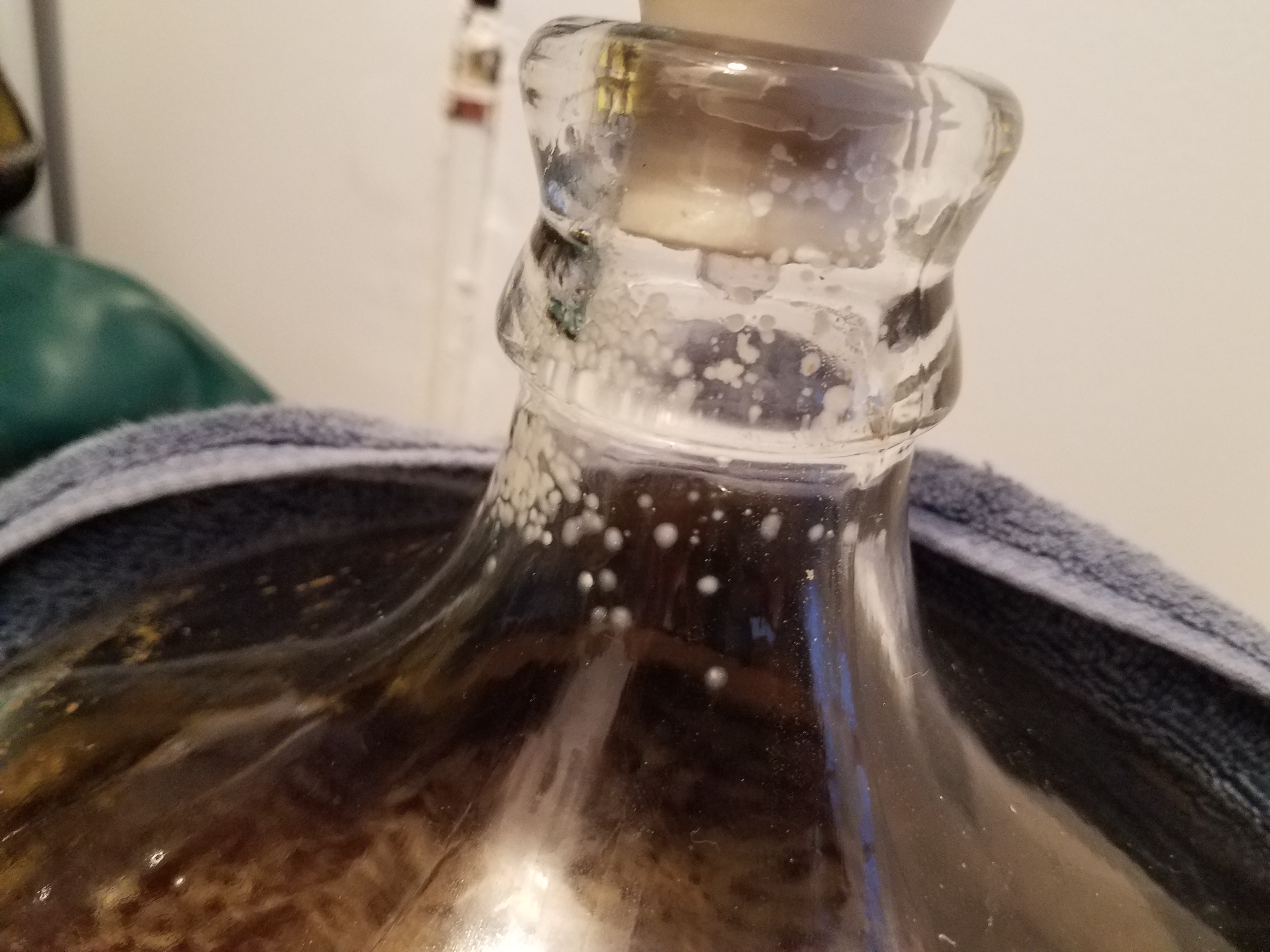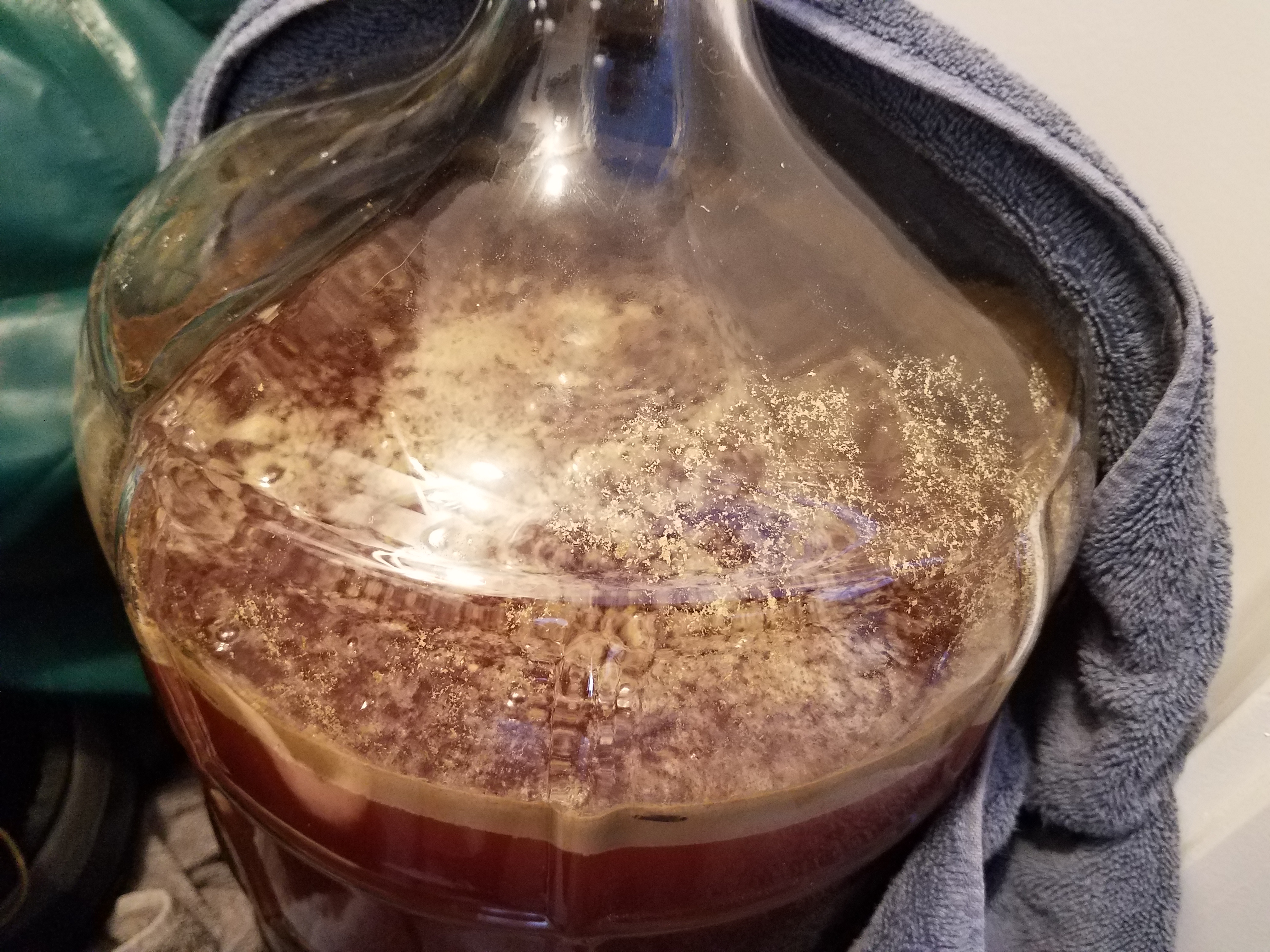It could be Diastaticus, but it's more known for super-attenuation, not necessarily taking off like a rocket overnight. Now chilling overnight may have kept your wort at the critical 120-80F temps for a relatively long time, ideal for those critters to grow.
That's the most krausen I've ever seen in such a short time after an (unintended) 'wild' inoculation.
I'd review your cleaning and sanitation regimen, something got missed perhaps?
Maybe take that kettle valve apart for a thorough cleaning? The chamber where the ball rotates. Or some other bug trap.
2 months ago I had a spontaneous fermentation starting in my stainless pot with leftover starter wort. It smelled great, I put it into a growler with an airlock to finish out. The first tastes while it developed were very Belgian, but by the time it finished it tasted more like @ss. It never got better, so it got dumped. There was quite a bit of a yeast cake for a 1.5 liter fermentation.
That's the most krausen I've ever seen in such a short time after an (unintended) 'wild' inoculation.
I'd review your cleaning and sanitation regimen, something got missed perhaps?
Maybe take that kettle valve apart for a thorough cleaning? The chamber where the ball rotates. Or some other bug trap.
2 months ago I had a spontaneous fermentation starting in my stainless pot with leftover starter wort. It smelled great, I put it into a growler with an airlock to finish out. The first tastes while it developed were very Belgian, but by the time it finished it tasted more like @ss. It never got better, so it got dumped. There was quite a bit of a yeast cake for a 1.5 liter fermentation.






































![Craft A Brew - Safale BE-256 Yeast - Fermentis - Belgian Ale Dry Yeast - For Belgian & Strong Ales - Ingredients for Home Brewing - Beer Making Supplies - [3 Pack]](https://m.media-amazon.com/images/I/51bcKEwQmWL._SL500_.jpg)
































